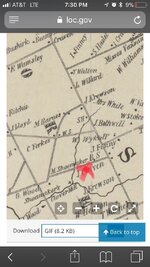BrettCo124
Hero Member
- Apr 29, 2009
- 901
- 939
- Detector(s) used
- Minelab Safari, Tesoro Sand Shark, Bazooka Gold Trap Mini, Gold Rush Nugget Bucket, Garrett Supersluice Gold Pans
- Primary Interest:
- All Treasure Hunting
Hi all,
Not looking for exact locations, just advice. I’ve never found civil war artifacts before. I live in Pennsylvania, right by Philadelphia. Just curious, are there artifacts basically everywhere? Or do I need to find a location where a battle occurred, or something along those lines, in order to find something?
Thanks all.
BrettCo
Not looking for exact locations, just advice. I’ve never found civil war artifacts before. I live in Pennsylvania, right by Philadelphia. Just curious, are there artifacts basically everywhere? Or do I need to find a location where a battle occurred, or something along those lines, in order to find something?
Thanks all.
BrettCo




